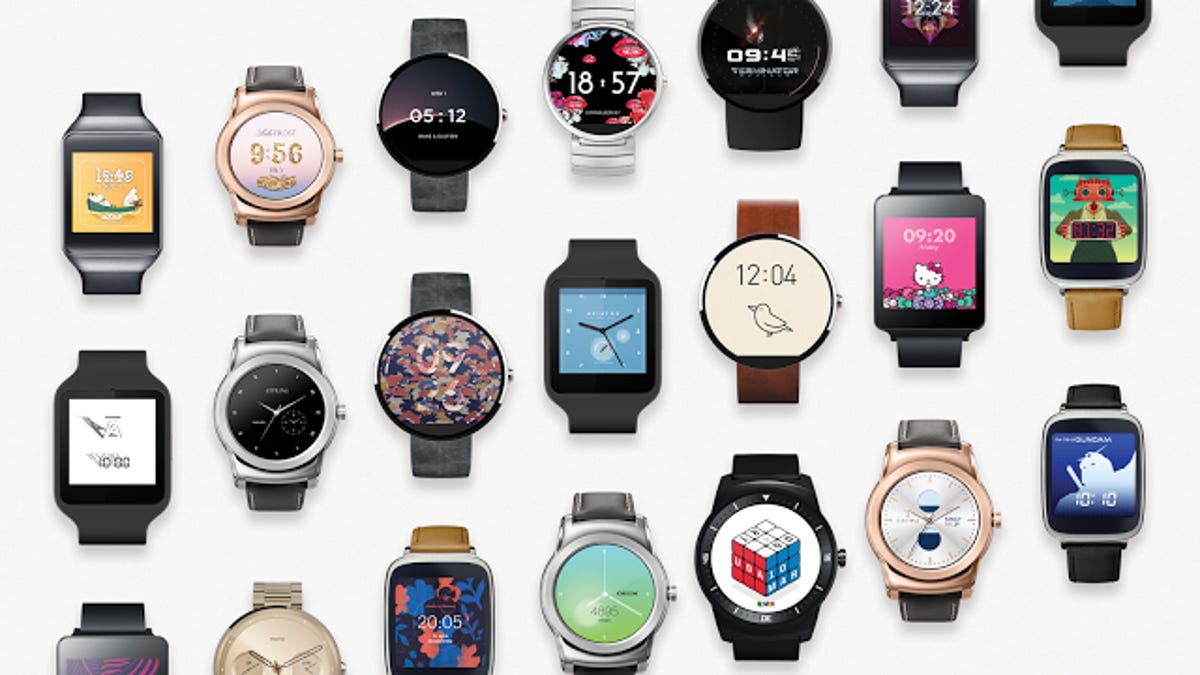New wave of Android Wear watches aims to make up for lost time
Asus, Huawei, LG and Motorola will use the IFA trade show in Berlin next week to show off their newest wearable devices.
Can't get enough of smartwatches? Well, a whole new batch is on its way.
Asus, Huawei, LG and Motorola will introduce their newest smartwatches next week at the IFA electronics trade show in Berlin, according to people familiar with the companies' launch plans. The devices will all run Google's Android Wear software, which was created to power wearable products like smartwatches.
You might be forgiven if you don't remember Android Wear, which Google introduced last year with much fanfare, but which hasn't resulted in any blockbuster products. Next week's releases will mark the second big wave of Android Wear devices, following on from that dismal showing in 2014. Android powers the vast majority of the world's smartphones, and Google and its partners are hoping for similar success in the burgeoning market for wearables.
The goal is that the new Android Wear devices will have enough features and alternative designs to lure buyers away from the Apple Watch, which -- despite criticism -- became the world's most popular smartwatch within its first few months on the market earlier this year.
"Apple Watch has clearly raised the bar for the global smartwatch industry," Strategy Analytics analyst Neil Mawston said. "The ball is now in the court of rivals, like Samsung, to respond."
Some early wearables, including Samsung's Galaxy Gear from late 2013, used Android, but the initial version of the software -- which wasn't tailored for wearables -- caused devices to run slowly and batteries to drain quickly. Samsung quickly switched to its homegrown Tizen software in its smartwatches as an alternative.
Android Wear emerged in early 2014 as a modified version of Android created specifically for smartwatches and other Internet-connected wearables. Google and its partners -- Samsung, LG and Motorola -- unveiled the first devices that used Android Wear at Google's developer conference that June. The software promised a simple user interface, instant notifications and the ability to perform simple tasks, like texting friends, using voice commands. Other companies such as Sony and Asus introduced smartwatches of their own.
But consumers largely disregarded those initial devices. Smartwatch makers collectively shipped only 720,000 Android Wear units in 2014 out of a total 4.6 million wearables, according to market research firm Canalys. Samsung, the world's biggest smartwatch vendor last year, chose to push devices running Tizen instead of Android Wear, and nearly three out of every four smartwatches shipped in 2014 came from the Korean company.
Of the Android Wear watches, Motorola's Moto 360 stood out with its round face and the company's decision to use premium materials such as a metal case and leather strap. But others quickly followed with the same strategy. Motorola is slated to unveil the follow-up at the show.
LG, meanwhile, is expected to release a smartwatch similar to its LG Watch Urbane LTE , which the company showed off in March. The Urbane LTE ran on software called WebOS, which LG purchased from Hewlett-Packard to use on its own products; the new version will run on Android Wear.
Huawei debuted its first smartwatch -- a device designed to look as much as possible like a classical round-face timepiece -- at the Mobile World Congress trade show in Barcelona earlier this year. And Asus is expected to give more details about the ZenWatch 2, which made its debut in June at the Computex trade show in Taiwan. The company hasn't shared many details about the device.
Every smartwatch player has taken a backseat in the wake of the Apple Watch's introduction in April. With only three months in the wearables market, Apple surpassed Samsung to become the leader in smartwatches. In the second quarter of this year, 76 percent of smartwatches came from Apple, while Samsung's control of the market tumbled to 7.5 percent, according to Strategy Analytics.
Samsung will use IFA to launch its newest smartwatch, the round Gear S2, but the device will run Tizen, not Android Wear.
Companies have been looking to wearables as a new market of opportunity as smartphone and tablet sales slow. Such devices are viewed as more personal than other gadgets, and nearly every major player in the technology sector has rushed to address the wearables market in some way. Still, wearables aren't yet mainstream, with most buyers remaining the more daring early tech adopters. Not even the Apple Watch has managed to attract a broad consumer base, and many analysts believe sales of that smartwatch have slowed.
"Despite buyers being satisfied with the device, we continue to see that the product is running out of steam," Juniper Research analyst James Moar said.




